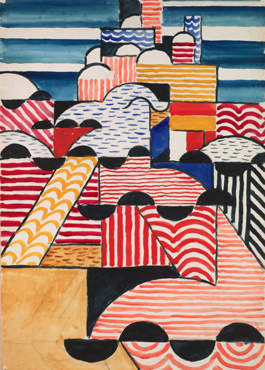
The Veletržní Palace is exhibiting drawings by architect Feuerstein
 |
Feuerstein studied architecture at several schools. In 1912, he enrolled with Jože Plečnik at the Prague School of Applied Arts, he also attended technical courses and ultimately the Academy of Fine Arts under Jan Kotěra. Among other things, he was one of the founders of modern Czech scenography, and from 1920 he worked as a scenographer for the National Theatre in Prague. In 1924, he went to Paris, where he worked in the architectural office of August Perret.
In 1926, he traveled to Japan, where he completed several projects with Antonín Raymond. In 1930, he returned to Bohemia, participated in the films of Vladislav Vančura, and again focused on scenography, especially at the Liberated Theatre. At the age of 38, he voluntarily ended his life. In Bohemia, he managed to realize only two buildings, although he was part of avant-garde creative groups and introduced knowledge of global architecture to the Czech scene with his international outlook.
The exhibition in the graphic cabinet showcases two essential layers of the architect's work on paper. In early drawings from 1911 to 1914, viewers can observe the state of the conceptual architectural design, the embodiment of an idea - in Feuerstein's case influenced by the architecture of classicism and the emerging cubism. Records from travels and transformations in direct contact with reality led Feuerstein to construct mass from surfaces and lines, says the exhibition's author Eva Bendová.
In 1921, Feuerstein traveled along with Josef Šíma to the area of the French-Spanish border, where a set of exhibited watercolors was created. Views of cities show how strongly cubism penetrated Czech art while testifying to the influence of purism. In accord with his most significant Czech building, the crematorium in Nymburk, Feuerstein also exhibits a consistent purist intention in his watercolors to construct compositional wholes of clear, comprehensible layout, primary shapes, and universal order.
The English translation is powered by AI tool. Switch to Czech to view the original text source.
0 comments
add comment












